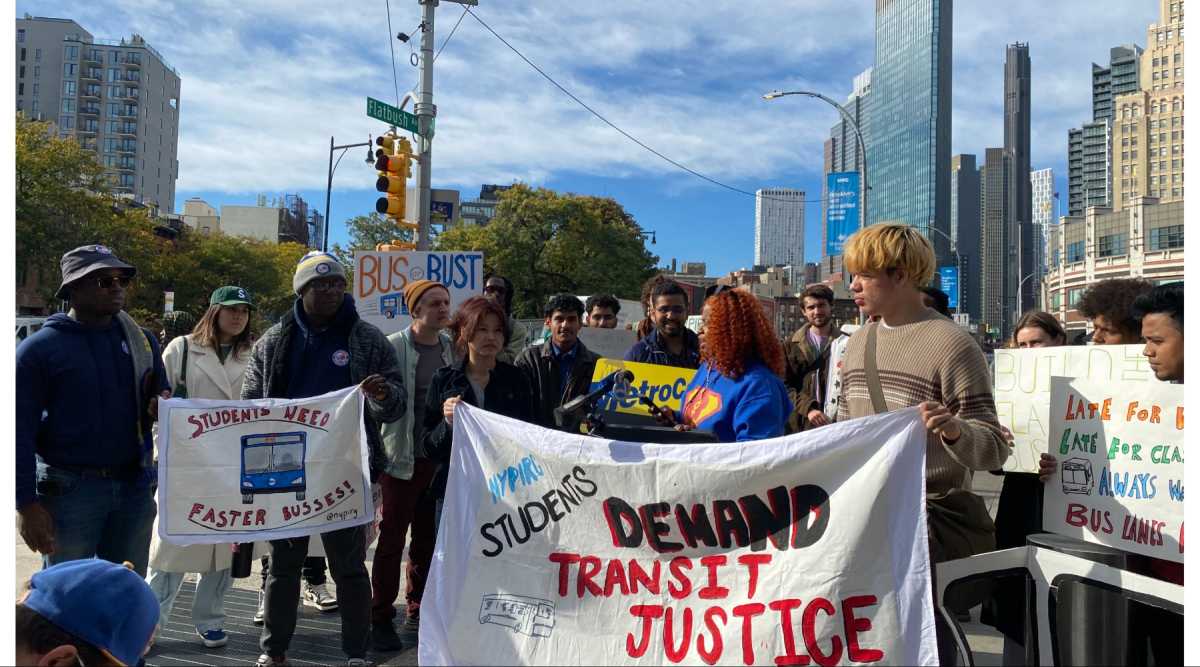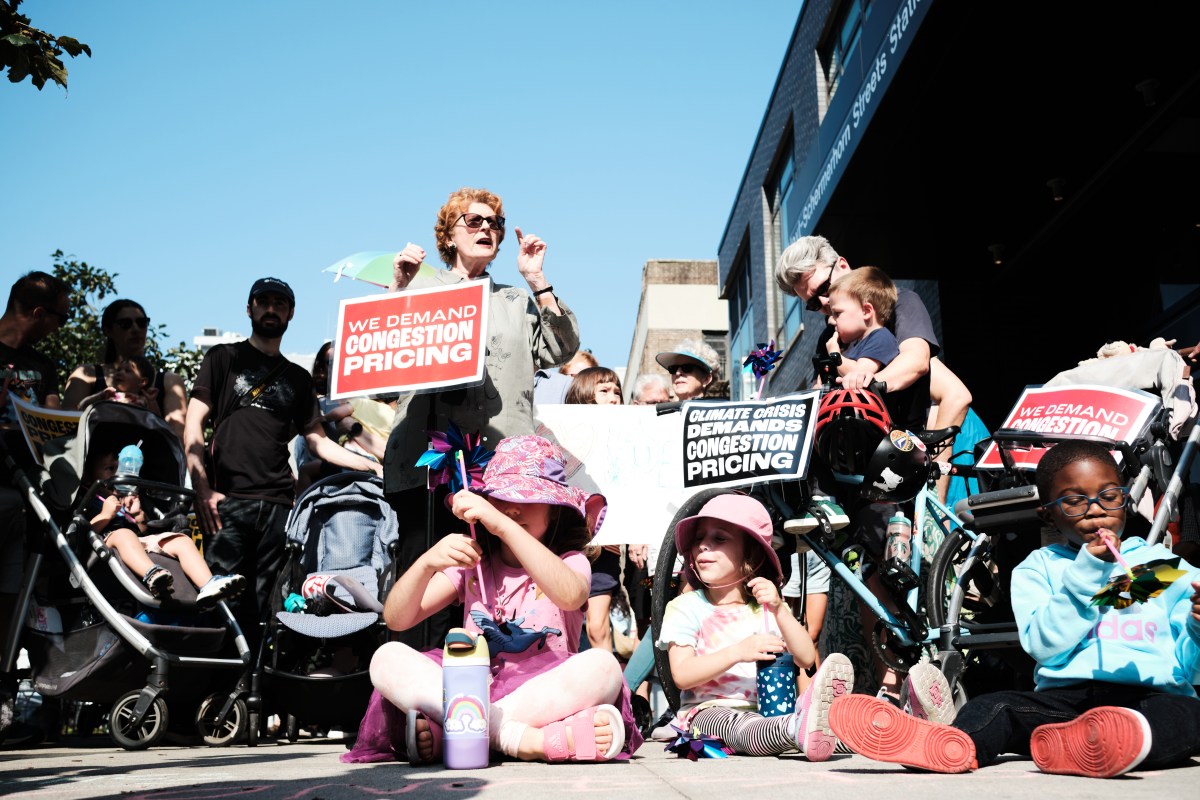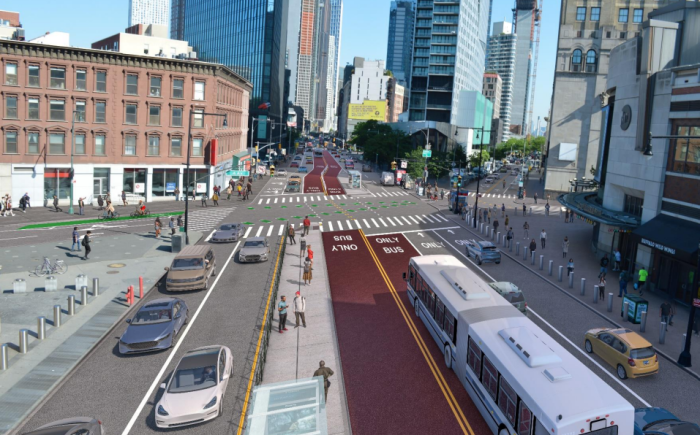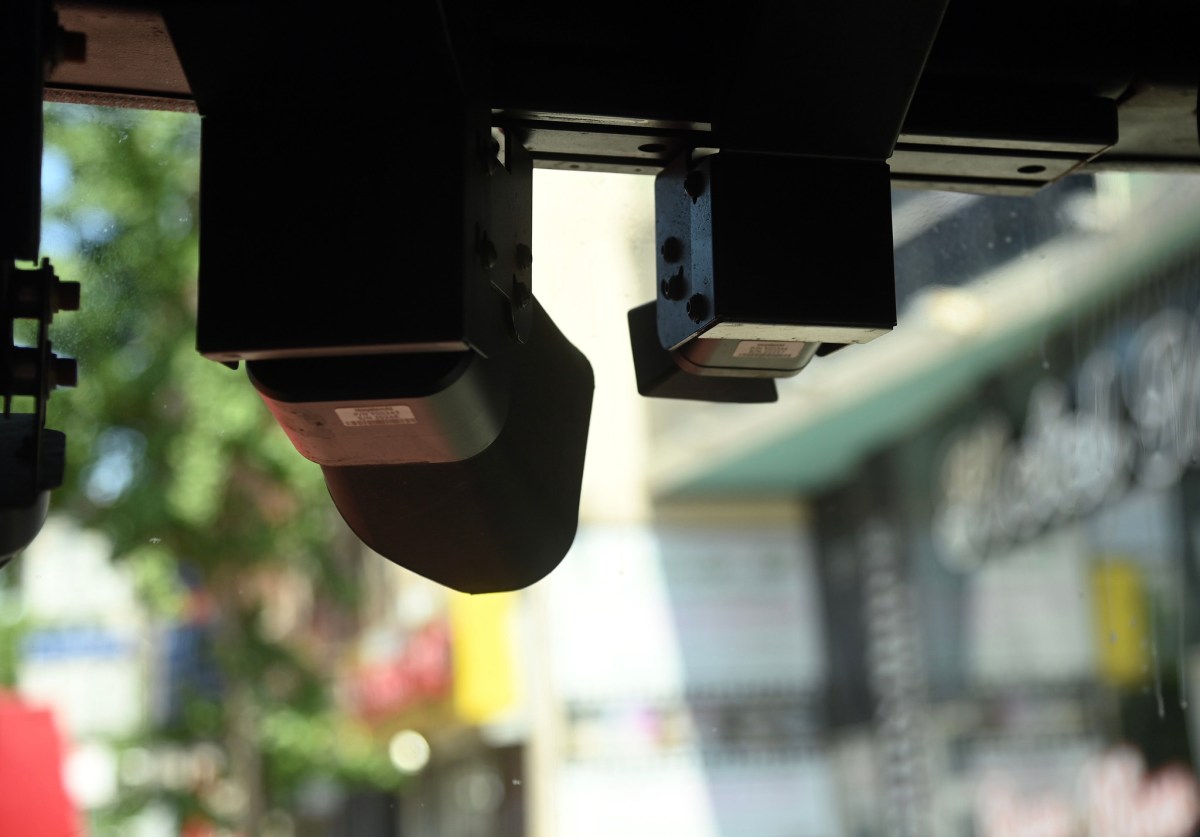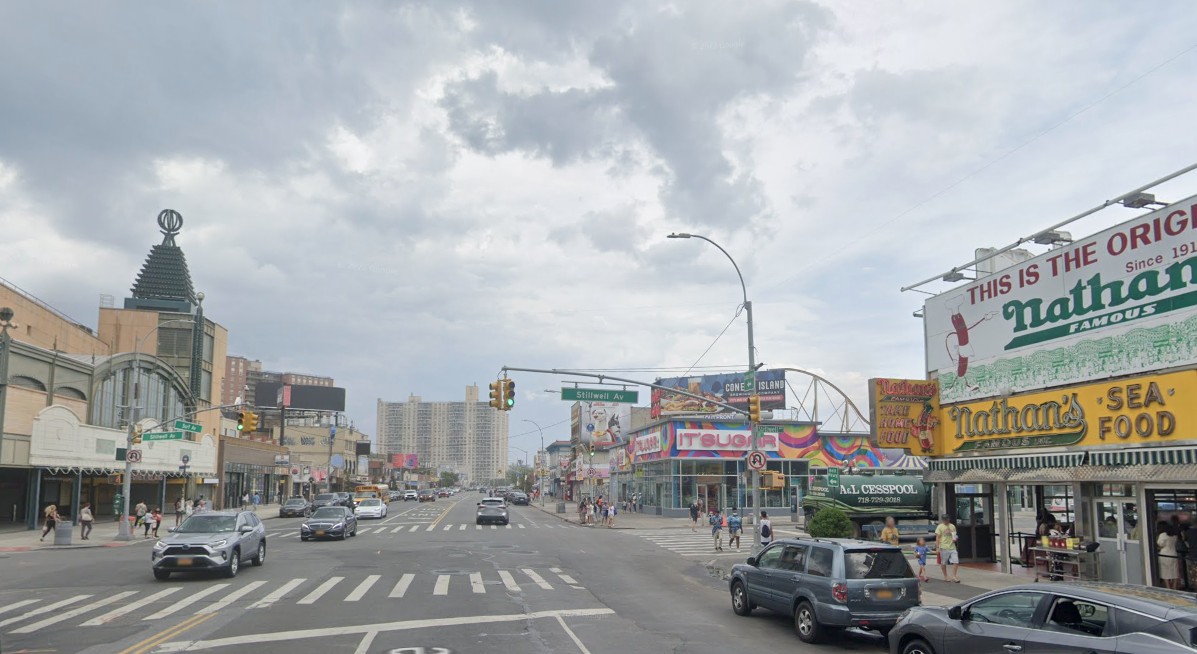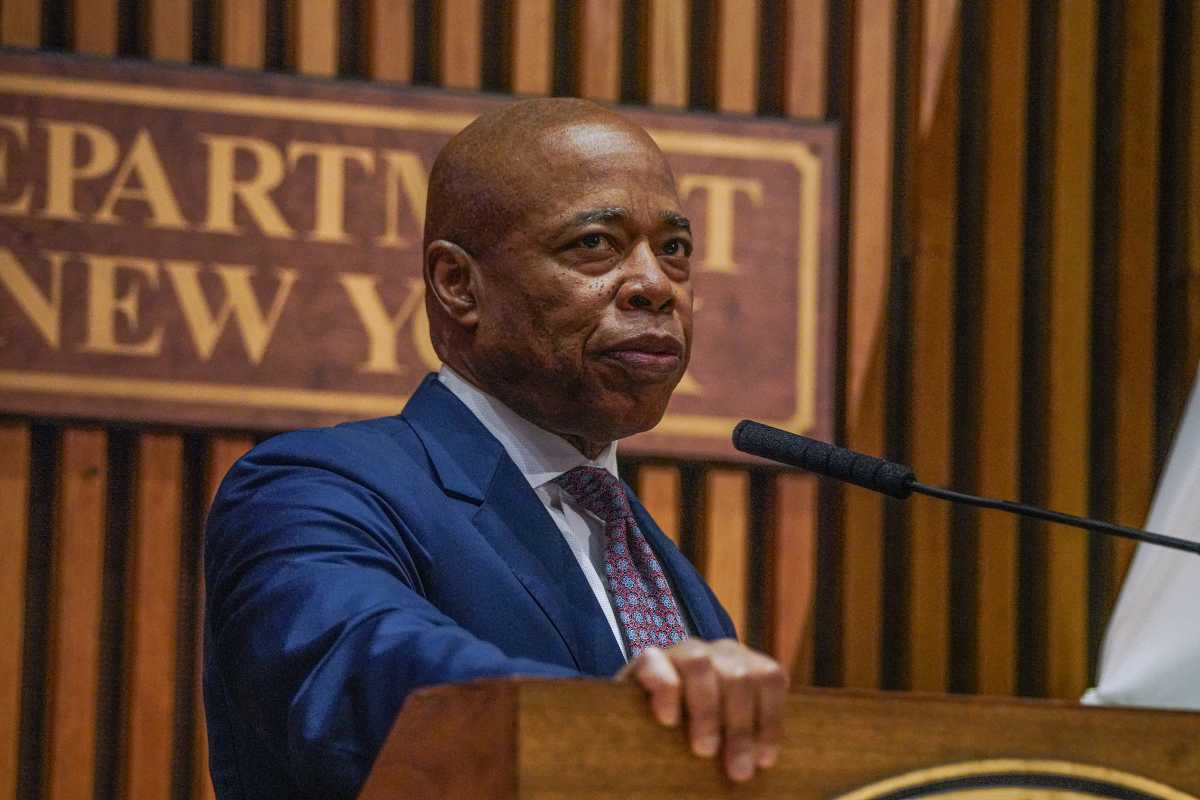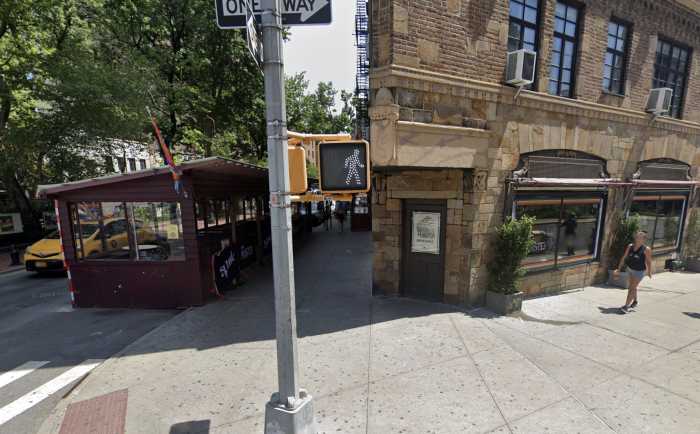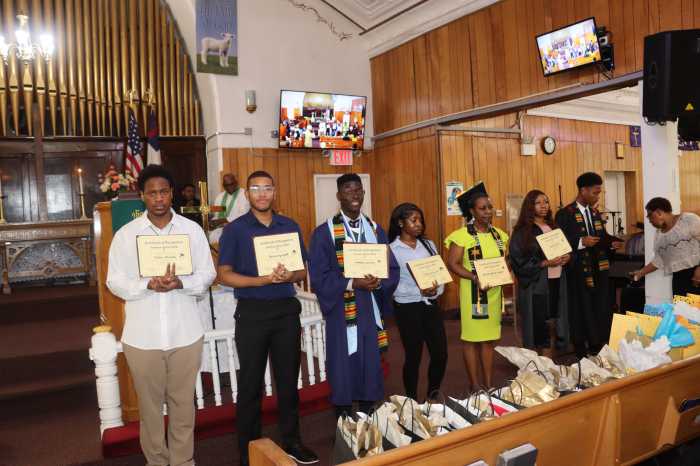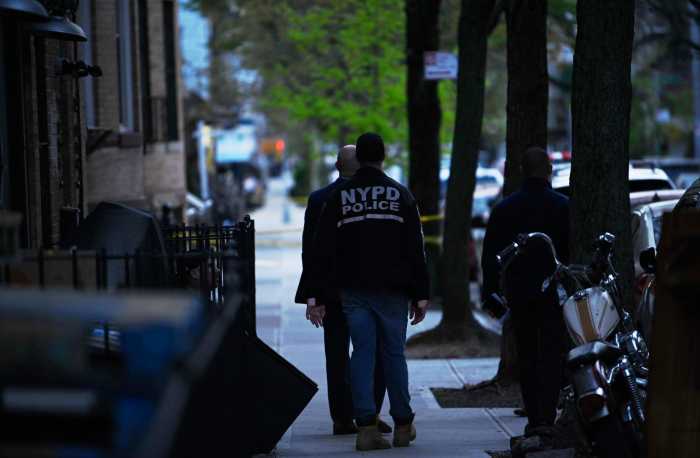Transportation advocates hiked from Flatbush Junction to Barclays Centre on Oct. 17 to highlight slow bus service along one of the borough’s busiest thoroughfares and called on the city to finally improve bus services on Flatbush Avenue after years of stalling.
In June, the Department of Transportation unveiled a long-awaited plan to introduce bus lanes along the avenue, a key route for more than 130,000 daily commuters. However, the current proposal only covers the northern section between Downtown Brooklyn and Grand Army Plaza.
The DOT said Friday it is still in the outreach phase and will assess the feasibility of bus lanes along the stretch between Prospect Park and Marine Park in “future phases.”
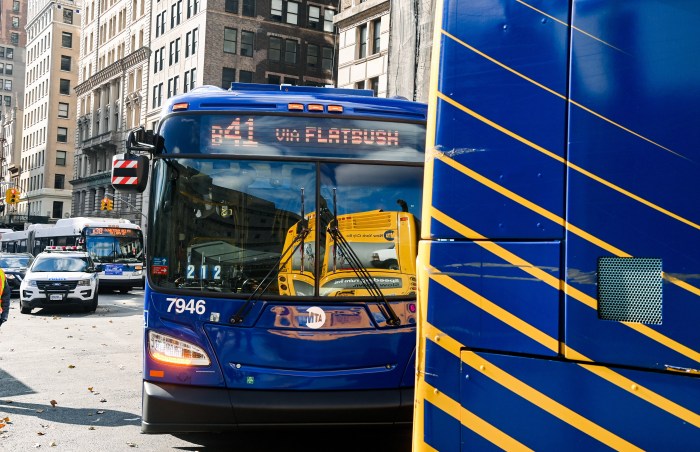
Among the marchers Thursday were students and members of advocacy groups, including the Riders Alliance and the New York Public Interest Research Group. They criticized the bus service along the corridor as “unacceptably slow and unreliable,” affecting a ridership largely made up of low-income residents and people of color.
“The B41, which runs down Flatbush Avenue, crawls at an average speed of 6.8 miles per hour,” said NYPIRG regional director Natasha Elder. “For the 132,000 Brooklynites who take buses down Flatbush Ave daily, this means missed appointments, being late for school, and less time with family.’
Elder said it was time for Mayor Eric Adams and the DOT to “get on board” with faster buses down Flatbush Avenue, noting the administration’s failure to meet the targets set in the city’s 2019 Streets Master Plan. Advocates suggested Adams could “make up for lost ground” by extending the plan to cover the whole of the 9.9-mile thoroughfare.
Under the plan, the city was supposed to build 50 miles of new bus lanes by now. However, only 9.6 miles have been completed — less than 20% of the target.
The Adams administration introduced the Flatbush Avenue bus lane project in 2022 with support from key elected officials along the route. But progress has been slow, leaving it among several stalled transit initiatives.
The DOT said it is prioritizing the northern portion of the avenue, where bus ridership is highest. The agency presented preliminary plans to Community Boards 2 and 8 in June, focusing on the heavily congested section between Downtown Brooklyn and Prospect Park.
The department is still evaluating three potential lane configurations: curbside lanes, center lanes, and offset lanes with parking separating the bus lane from the sidewalk.
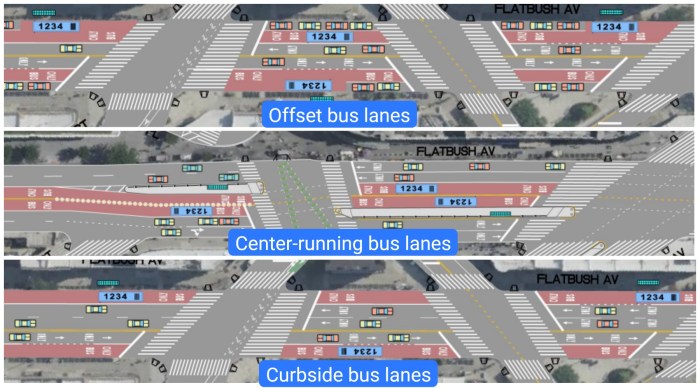
“By redesigning Flatbush Avenue we can speed up bus service to improve the lives of bus riders currently stuck on one of the most congested corridors in Brooklyn — while also enhancing pedestrian safety. We look forward to continued public outreach, design refinement, and completing our traffic analysis in consultation with the community,” a DOT spokesperson said.
“This process will help inform the best way to make Flatbush Avenue work best for all New Yorkers using the corridor.”
The department’s analysis, expected this fall, will assess how the bus lanes would affect traffic on Flatbush Avenue and nearby streets. Officials plan to present their findings to community boards and stakeholders before finalizing designs.
All going to plan, implementation is projected for spring or summer 2025.
Lisa Daglian, executive director of the Permanent Citizens Advisory Committee to the MTA, stressed the urgency of the project to reporters outside Barclays Center Thursday.
“More than 130,000 Brooklynites are forced to crawl up and down Flatbush Avenue every day on buses that go at speeds slower than a chicken – that’s more people than live in the entire City of Albany,” said Daglian. “Day after day, this unconscionable policy failure hurts MTA riders through lost time with loved ones and late arrivals to work and school. It’s far past time the City to comply with the Streets Plan, prioritize transit riders, and get Flatbush Avenue moving.”


